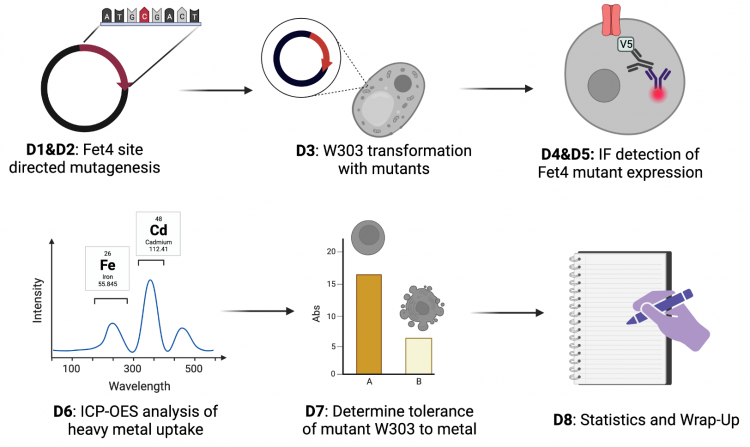20.109(S23):Module 2
Contents
Module 2: protein engineering
Heavy metal environmental contamination is an increasing concern. Heavy metals are released into the environment during activities like mining and fertilizer release in farming. Additionally, heavy metals are released into the environment from the disposal of electronic waste. As such, the ability to remove the metal contamination from soil and water is a topic of great interest.
One way to approach this problem is by harnessing known biological mechanisms and repurpose them to clean environmental pollution. This is known as bioremediation. In this module, we will use protein engineering to attempt to create a model system for bioremediation by taking advantage of the ability of baker’s yeast, Saccharomyces cerevisiae, to take up metal cations from the environment. Metal cations like iron or calcium are used in yeast metabolism, and previous work has established that metal transporters are able to take up multiple types of metals with different affinities.
Our aim in Mod 2 is to take advantage of this inherent property in yeast metal transporters and engineer a low affinity iron transporter, Fet4, to preferentially take up Cadmium, a toxic heavy metal. To do this, we will mutagenize exogenous Fet4, transform the mutants into yeast, and examine the ability of our transformed yeast to take up cadmium from culture media.
Research goal: Genetically modify a yeast iron transporter to preferentially take up cadmium as a model for bioremediation
Lab links: day by day
M2D1: Determine mutagenesis strategy
M2D2: Perform site-directed mutagenesis
M2D3: Sequence clones and transform into yeast cells
M2D4: Determine transporter mutation and prepare metal uptake experiment
M2D5: Analyze ICP-OES data
M2D6: IF staining and prepare for cytotoxicity experiment
M2D7: Confirm transporter expression and cell survival of yeast exposed to metal
M2D8: Complete data analysis and organize Research article figures
Major assignments
Journal article presentation
Research article
References
- Designing yeast as plant-like hyperaccumulators for heavy metals
- Characterization of the FET4 Protein of Yeast: Evidence for a direct role in the transport of iron

